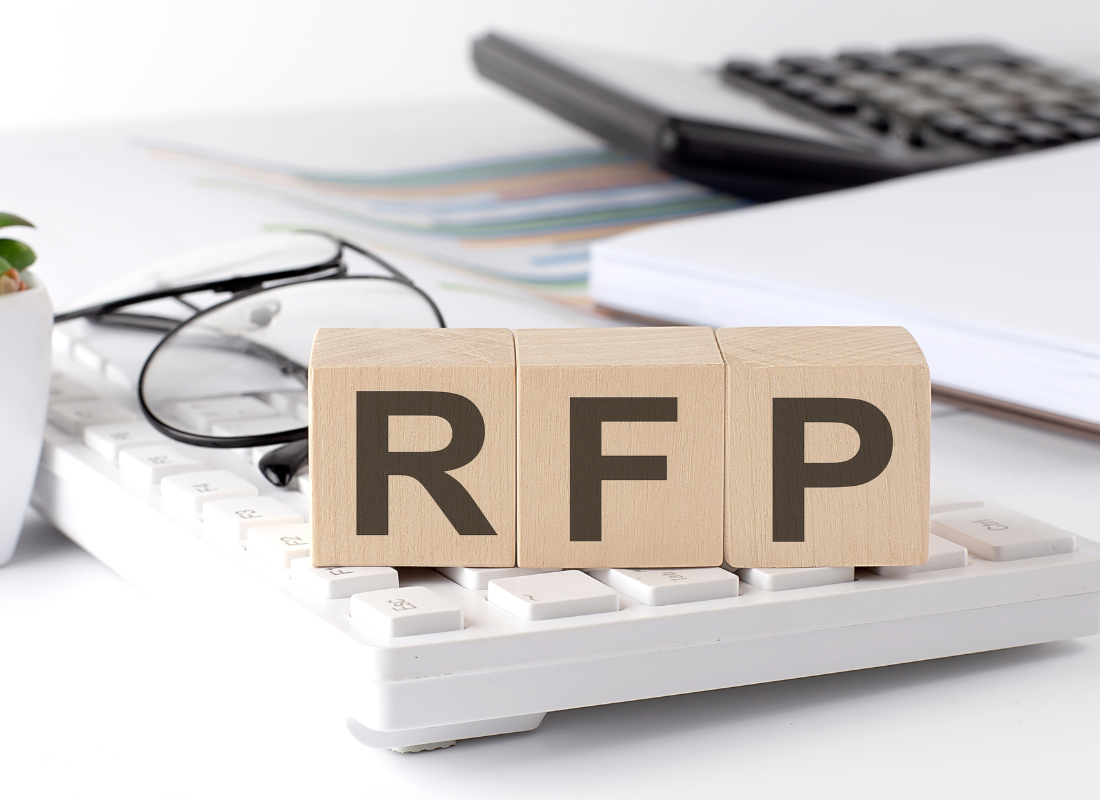Want more like this?
Sign up today to get free articles, webinars, whitepapers, yearly guides and more delivered to your inbox.
How Form 990 Can Boost Your Nonprofit’s Budget
Originally published on August 16, 2023
Updated on February 6th, 2024
Form 990 provides the IRS with essential information about tax-exempt organizations. Think of it as a full body scan of your nonprofit, detailing your mission, programming, financials and leadership. The IRS reviews this information to ensure your organization is staying compliant with tax rules and regulations.
The Form 990 also serves as an important measure of transparency and accountability. Because these forms are publicly available, they are a means of demonstrating that your organization is fulfilling its commitments to the community and using donors’ contributions wisely.
JMCO nonprofit partner Corinne LaRoche walks you through the basics of the Form 990. A key member of our Nonprofit Services Team, Corinne discusses the core components of the form and the common schedules nonprofits need to complete. She also explains how you can transform the Form 990 from a simple compliance document into a powerful fundraising tool that showcases your organization’s work and trustworthiness to current and potential donors.
Form 990: An overview
The Form 990 (also known as Return of Organization Exempt from Income Tax) is the annual return that includes information about your nonprofit’s financials, programs, governance practices and compliance concerns. Most tax-exempt charitable and nonprofit organizations must file a Form 990 with the IRS each year.
Form 990 is more in-depth and qualitative than other common forms, such as Form 1120 for corporations or 1065 for partnerships. It is also publicly available, which creates an opportunity to share information about your programs with the public. Since everybody can see a Form 990, it’s always good to be as transparent as possible. That transparency can encourage people to donate to your nonprofit or volunteer.
Initially introduced as a two-page document in 1941, today the core of the Form 990 consists of 12 pages. This is followed by a set of 16 schedules, some of which may not apply to your nonprofit organization.
Much of the information contained in the form applies to the fiscal, not calendar, year. Numbers should adhere to your organization’s accounting practices – on a cash or accrual basis.
What to disclose and why
Over the first 12 pages, you will share a combination of financial and qualitative information that comprise a high-level view of your organization.
This information includes, but is not limited to:
- Basic details about your organization – its name, address and so forth
- Your mission statement
- How many employees, volunteers and voting board members your organization has, as well as salaries and compensation
- Total contributions to your nonprofit, fundraising fees, grants and expenses
- Programs and their revenues and services
“This is really not about paying tax,” Corinne said. “This is about disclosing information to the public.”
Part 6 of the form dissects how the nonprofit is governed and managed. It names the members of the board of directors and whether they are paid. It also discloses whether any of them have family ties to the organization or a business relationship that could compromise your nonprofit’s independence.
Keeping the board from being too personally and fiscally invested in your organization helps prevent any member from holding undue power and influence. This in turn can ensure your organization stays on track with its mission.
A potential red flag for the IRS is a board member who engages in business transactions with the nonprofit. This is known private benefit or private inurement and has to be disclosed on Form 990.
“The IRS wants to see that appropriate policies and procedures are in place to make sure donor funds are being used responsibly and that board members aren’t using the nonprofit to personally profit,” Corinne said. “If the IRS suspects that is happening, your nonprofit could get pulled for an audit.”
This does not prohibit an independent contractor who serves on your nonprofit’s board from doing business with your organization. However, business should be conducted as “an arm’s length transaction.” That is, services or products must be provided at a fair market price and according to the nonprofit’s normal procurement process.
Part 7 of the form lists board members and officers, key employees and employees who make over $100,000. You should also include former directors and trustees who continue to earn over $100,000 for up to five years after they have completed their roles in your organization.
Making sense of schedules
After completing the first 12 pages of Form 990, you will likely need to fill out several schedules. Nearly all nonprofit organizations must submit Schedule A. The others apply only to certain organizations.
Here are key components of these schedules that may apply to your nonprofit:
Schedule A, Public Charity Status and Public Support
Most public charities qualify under lines 7 and 10 on this schedule.
Line 7 applies to organizations that receive a substantial portion of their support from government grants, other nonprofits and/or the public. In order to qualify as a public charity under line 7, at least one-third of your support must come from the general public.
If a single donor provides more than 2% of your total contributions, the excess over 2% is not considered public support. The reasoning behind this rule is to prevent one or more donors from exercising an undue amount of control over the organization.
If you fail to meet the public support test on average over a five-year period, your organization will be considered a private foundation. Note that the 2% rule does not apply to federal and state grants or contributions from other nonprofits. These donations are considered to be public support.
Line 10 applies to organizations that have a significant amount of exempt income that does not come from contributions. These include admission and service fees. These nonprofits should conduct the 509(a)(2) test to determine if they qualify as publicly supported organizations.
Schedule B, Schedule of Contributors
Schedule B shows how much your organization receives from significant donors. These include government grants and contributions from other nonprofit organizations or individuals.
While you must disclose donors’ names and addresses to the IRS (along with their contribution amounts), names and addresses can be redacted for privacy on the public copy of the form.
Schedule C, Political Campaign and Lobbying Activities
Lobbying can quickly land your nonprofit in murky legal waters. While it isn’t strictly prohibited, be careful with how much you do and how you do it. Corinne’s recommendation is to consult your CPA and attorney before engaging in any level of lobbying or political campaigns.
501(c)(3) organizations are not allowed to conduct a substantial amount of lobbying. But determining what qualifies as “substantial” is difficult, as the IRS does not define an amount.
If your nonprofit plans to lobby, one option is to complete the 501(h) Election. This can clarify the amount of money you are allowed to spend on lobbying based on your overall expenditures.
“If you are going to get into any moderately significant level of lobbying, the 501(h) Election is a really helpful tool,” Corinne said. “It gives you a bit of a safe harbor when it comes to not worrying about whether you’re in the gray area of what constitutes substantial lobbying.”
On this schedule, 501(c)(4), (5) or (6) organizations should also disclose to members any portion of their dues that is non-deductible.
Be aware that endorsing political candidates outright is prohibited across all types of nonprofit organizations.
Schedule G, Supplemental Information Regarding Fundraising or Gaming Activities
If you hire a professional fundraiser for more than $5,000, this must be disclosed on Schedule G. This requirement does not apply to internal development staff.
Any fundraising events that garner more than $5,000 must also be disclosed. You should provide the event’s gross receipts, a breakdown of expenses and net income.
If your organization hosts any kind of gaming (including bingo, raffles and other games of chance), check with your CPA and state regulations to ensure you’re complying with regulations. Keep in mind that you cannot require someone to purchase a raffle ticket as part of an event entry fee; you can only suggest a donation.
Schedule O, Supplemental Information
This section serves as an overflow space in which you can provide additional information or further explain certain line items. It provides an opportunity to share more about your nonprofit’s story and context for any unusual changes on the current year’s form. Review the information on Schedule O on a yearly basis to make sure all it is up to date.
Schedule R, Related Organizations and Unrelated Partnerships
This schedule discloses any overlap between your nonprofit’s board and those of related organizations and partners. It also shows familial relationships between these entities, the size of these organizations, their percentage of ownership of your nonprofit and the activities they conduct. You must also disclose transactions over $50,000 with for-profit organizations on Schedule R.
How to use Form 990 in fundraising
Form 990 can operate as far more than a reflection on your nonprofit’s financials. It’s also an opportunity to tell your organization’s story in a compelling way to current and potential donors. Here, you can expand on your mission statement, program accomplishments, growth and change from the previous year and how you are delivering on your promises to the community. It can serve as a marketing and fundraising tool.
“It’s a place where you can highlight the impact that you’re having,” Corinne said.
Donors and funders naturally have questions. Don’t wait for them to ask! It’s worth the spending the time to disclose detailed information about your organization up front. Donors often evaluate organizations through services such as Candid (formerly known as GuideStar) and Charity Navigator to determine whether to make a contribution. These online services use your Form 990 to rank your organization’s program-expense ratio – the percentage of contributions spent directly on programming – and transparency.
Candid awards a tier of four seals of transparency to organizations that apply. Validating your nonprofit’s profile and providing basic information about the organization can qualify you for the first three levels of seals. Additional information about your financials, impact, governance and leadership demographics can earn you a gold or platinum seal.
Candid also connects with AmazonSmile, Facebook Giving, Apple Pay and other third parties, offering you an easy way to collect donations and showcase your seal. The company can also generate a transparency report for you to share with potential donors.
Charity Navigator reviews nonprofits’ financial information based on their three most recent 990s and provides ratings for how well organizations are operating.
Boost your level of transparency by having clear company policies in place, including one that covers conflicts of interest. Document your board meetings, and list your website.
It’s also good practice to have your board of directors review Form 990 before filing to make sure everything is accurate and reflects well on your organization. This can also refresh board members’ memories on key statistics to share with potential donors, such as your program-expense ratio and main accomplishments over the year.
“That’s how you recruit donors,” Corinne said. “That’s how you tell them the mission of your organization and what you are doing. People want to know where their dollars are going to go.”
All content provided in this article is for informational purposes only. Matters discussed in this article are subject to change. For up-to-date information on this subject please contact a James Moore professional. James Moore will not be held responsible for any claim, loss, damage or inconvenience caused as a result of any information within these pages or any information accessed through this site.
Other Posts You Might Like

